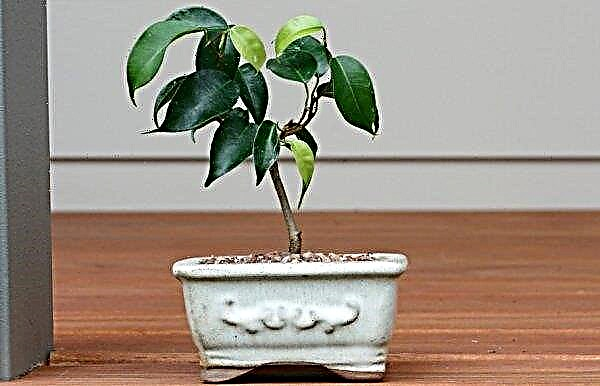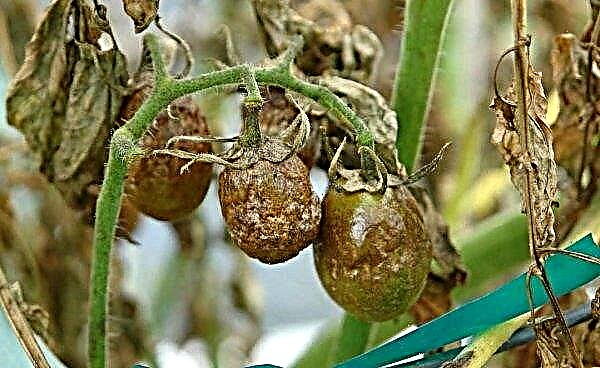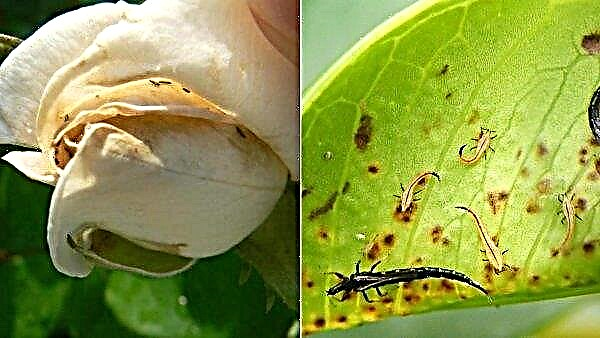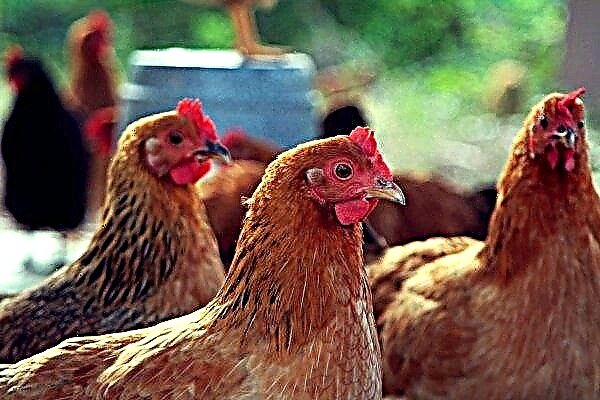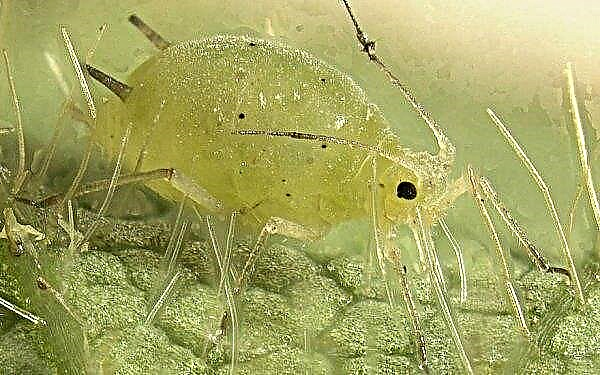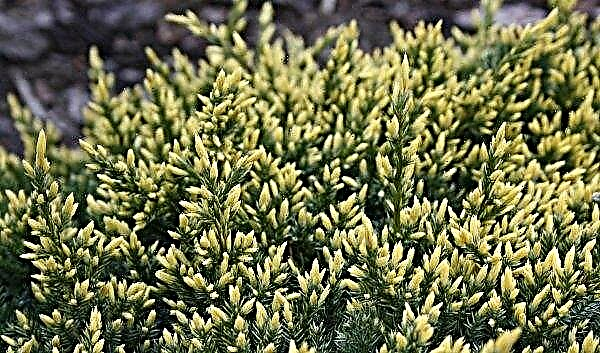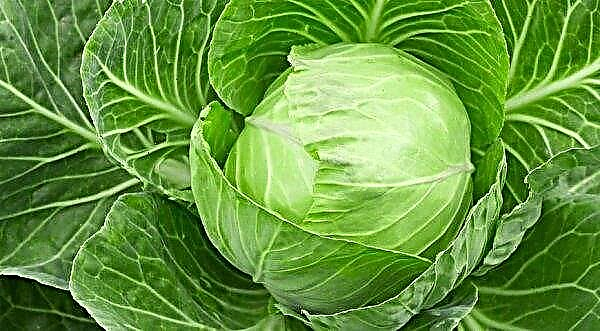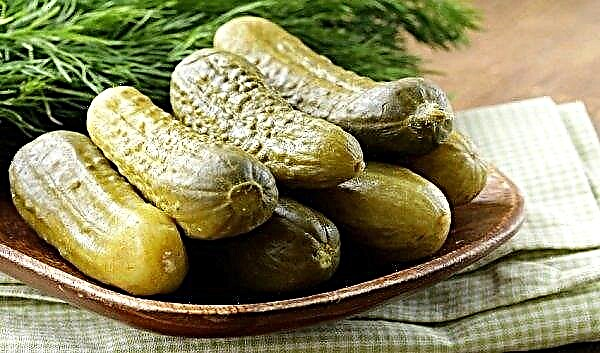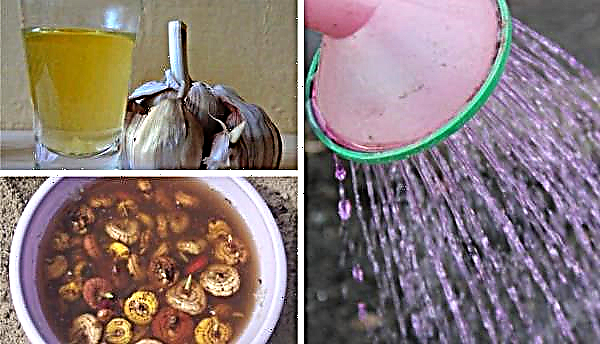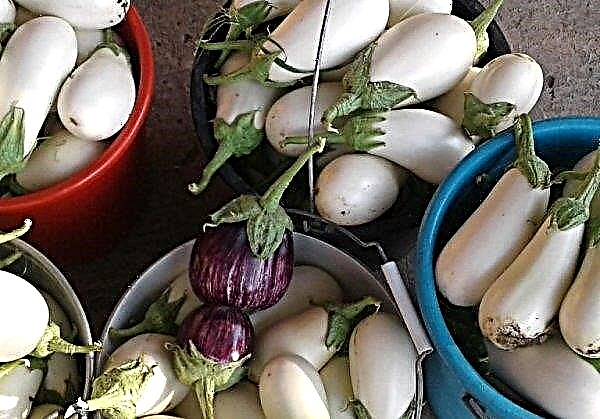High productivity, equally high taste, good transportability and resistance to disease - all this put forward the potato variety Lugovskaya over 30 years of existence in the ranks of the most popular in farms and summer cottages. Read more about this potato variety in the article.
Characteristic and Description
The considered table potato variety has an average ripening period: its vegetation period lasts about 80 days. It has an upright compact bush with a moderately developed green mass, consisting of matte dark green leaves of medium size. White or cream flowers quickly fade and practically do not form ovaries. The powerful root system forms up to 15 tubers of oval shape and medium size, whose weight lies between 70 and 130 g. Potato fruits with white pulp are distinguished by high consumer qualities. They are especially suitable for making mashed air, indispensable in baby food. Also, mashed potatoes from this potato lend themselves well to sublimation. Good Lugovskoy in stew and in the preparation of various fillings.
Potato fruits with white pulp are distinguished by high consumer qualities. They are especially suitable for making mashed air, indispensable in baby food. Also, mashed potatoes from this potato lend themselves well to sublimation. Good Lugovskoy in stew and in the preparation of various fillings.
However, it is not very suitable for frying in a pan or deep-fried and for stuffing. Tubers of the described variety have good keeping quality, transportability and the ability to maintain a decent presentation for a long time. In addition, Lugovo potatoes are quite resistant to many diseases common among solanaceous crops.
Did you know? Potato is a poisonous plant, because even from one or two of its berries a person is able to poison.
Origin
The potato variety under discussion was bred by Ukrainian breeders in 1987. The basis of the variety was the famous Sineglazka.
Productivity
Potato Lugovskoy has a high yield. During the tests, it was officially recorded receiving 51.4 tons per 1 ha. Experts argue that with the proper implementation of all agrotechnical rules, the variety is capable of producing almost 1,500 medium-sized potatoes with 100 m².
Taste qualities
High gastronomic qualities of the Lugovskaya potato fruits are noted. A high concentration of starch makes boiled potatoes crumbly, gives them a delicate texture and a pleasant taste. A characteristic feature of the potato fruits of this variety is a clear balance in the composition of the pulp, so that it is free from excessive dryness, as well as wateriness. As already mentioned, the variety in question is ideal for preparing mashed airy consistency, as well as for stewing and obtaining high-quality starch.
Did you know? A person grows potatoes as an annual plant, while in nature this crop is perennial.
Advantages and disadvantages
- The variety has numerous advantages in the form of:
- superior palatability;
- high productivity;
- good keeping quality of fruits;
- exemplary commodity conditions of potatoes;
- resistance to mechanical stress on tubers;
- the ability of potatoes to peel well due to the smooth surface of the tubers;
- decent nutritional qualities of root crops and a high content of ascorbic acid in them;
- unpretentiousness when grown in various weather conditions;
- resistance to many potato diseases;
- increased demand from consumers.
Serious flaws in this potato are not noted. Some claims for individual growers are caused by a noticeable dependence of the variety on the nutritional properties of the soil and competent irrigation. Also, not everyone is happy with the unsuitability of these root crops for frying.
Planting and growing potato varieties
When planting and growing the Lugovskaya potato variety, standard agrotechnical rules are mainly applied.
Optimal landing times
Tubers should be planted on the site only when the soil temperature reaches +10 ... + 12 ° С. Lower soil temperature can cause seed decay.
Tuber preparation
Before planting potatoes in the soil, they should be transferred from a cool potato storage to a place with an ambient temperature of up to + 14 ° С in order to activate processes leading to awakening and further germination in them. After a couple of days, the tubers need to be moved to a space with sunlight. After the appearance of sprouts on the tubers, the seed material can be planted in the soil.
The day before this, potatoes must be treated with antibacterial and antifungal drugs, for example, such:
- Bordeaux liquid;
- copper oxychloride;
- "Maxim".
For this, tubers should be immersed in a one percent solution of the selected agent for half an hour.
Soil preparation
The potato variety under discussion does not impose excessive requirements on planting location and soil type. However, heavy loamy soils do not contribute to a high yield. But if the soil is enriched with humus and lightened with sand, then the potato responds with a noticeable increase in productivity, especially provided that the soil is still fertilized with humus, wood ash or peat. Of great importance are the predecessors that previously grew on selected land intended for planting potatoes.
On household plots, the potato crop grows best on the soil, where before it was grown:
- beans;
- zucchini;
- cucumbers
- beet;
- bow;
- carrot;
- White cabbage;
- peas;
- garlic.
Important! In no case is it recommended to plant potatoes on the ground where solanaceous crops were previously cultivated — tomatoes, eggplant and peppers.
Landing technology
When the soil temperature reaches + 10 ° С on the loosened and buried soil, one can start planting the seed material.
To do this, you must:
- Draw a straight, indented line in the selected area.
- Dig holes to a depth of 0.1 m along it, with a distance between them of 0.35 m and a distance between rows of 0.7 m.
- Pour 0.5 kg of humus and half a glass of wood ash into each well.
- Put 1 potato in the wells.
- Cover them with soil.
- Level the soil.
Video: planting potatoes
Variety Care Features
Although the Lugovskaya potato variety is not considered capricious, being able to produce crops even in adverse weather conditions, and does not require excessive efforts to care for it, it responds to the concern with increased productivity. Accordingly, it is important to properly water, fertilize and cultivate the soil around the bushes.
The first watering after planting should be done when the sprouts above the ground rise to a height of 0.05–0.1 m. Earlier watering provokes the appearance of surface roots, which will lead to a permanent deficiency of moisture that the plant will experience. The first watering is carried out at the rate of 4 liters of water per plant (poured into the center of each bush). At the same time, it is necessary to observe the fragmentation of irrigation: water is not poured out all at once, but in parts - after complete absorption of the previous portion by the ground.
The soil should be moistened to a depth of 0.5 m. Before flower buds appear on the bush, watering is carried out every week. It should be remembered that plants need to be watered with settled water with an ambient temperature, but in no case cold. Under bushes with the described potato variety, fertilizers should be applied at least 2 times during the season. In this case, foliar top dressing in the budding phase is very useful, which not only increases productivity, but also increases the plant's resistance to diseases.
Experts recommend using such tools for this:
- "Bitoxibacillin";
- "Lurastim";
- Fitoverm;
- "Akarin."
It is also useful to feed potato bushes throughout the season:
- mullein;
- bird droppings;
- potassium sulfate;
- superphosphate;
- magnesium sulfate;
- complex mineral fertilizers.
 In this case, you should pay attention to the fact that the nitrogen content in fertilizers is not higher than 10%, and urea is absent altogether. Such substances stimulate the growth of green mass, while inhibiting the development of root crops. After the appearance of the first seedlings, it is necessary to carry out the hilling of the bush, which is then produced regularly after each rain or watering. These actions eliminate weeds and create favorable temperature, humidity and oxygen conditions in the root system, contributing to the successful development of root crops.
In this case, you should pay attention to the fact that the nitrogen content in fertilizers is not higher than 10%, and urea is absent altogether. Such substances stimulate the growth of green mass, while inhibiting the development of root crops. After the appearance of the first seedlings, it is necessary to carry out the hilling of the bush, which is then produced regularly after each rain or watering. These actions eliminate weeds and create favorable temperature, humidity and oxygen conditions in the root system, contributing to the successful development of root crops.Important! Do not water the land with seed planted in it.
Pests and diseases
For all its resistance to many potato diseases, the Lugovskoy variety is not completely immune from them. For example, it may be infected. late blight.
To combat this fungal disease, the following fungicidal preparations must be used:
- "Fitosporin";
- "Maxidom";
- "Ditamin M-45";
- "Kuproksat";
- "Arcedil."
Of the pests, this vegetable crop is most often attacked. Colorado beetles. In addition to the traditional method in the form of manual collection of pests from potato bushes, There are modern means of struggle, for example:
- "Commander";
- "Bison";
- "Calypso";
- "Karbofos";
- "Regent";
- Intavir
- "Karate".

These same drugs are also effective against:
- spider mite;
- cicadas;
- flies.
Harvesting and Storage
It is very important to choose the optimal time for harvesting root crops. Otherwise, there is a risk of loss of nutrients, nutrients and the ability to long-term storage without loss of presentation. After yellowing, wilting and lodging of tops on the ground, one should start digging tubers. Most often, depending on the region of growth, this occurs in late August or early September.
After extracting from the ground, the tubers must be dried in the sun, but not longer than 2 hours, since a longer period is fraught with the formation of the harmful substance solanine in potatoes. This does not apply to tubers intended for planting next year. They, on the contrary, should be brought to green for a couple of days in order to improve their safety and ability to resist rodents.
Tubers intended for human consumption should be stored in a dark room, where the temperature is in the range +20 ... + 40 ° С at a humidity of 85%. Usually this is a basement that must first be disinfected with a concentrated lime mortar with the addition of copper sulfate.
The basement can also be fumigated with burning sulfur, and wooden equipment can be treated with a high concentration of manganese. In urban conditions, potatoes are often stored on balconies and on loggias in wooden boxes insulated with polystyrene foam. In just a third of a century of its existence, Lugovskaya potatoes have found their niche among traditional and popular potato varieties due to their excellent taste, high yield and sufficient unpretentiousness to growing conditions.
In just a third of a century of its existence, Lugovskaya potatoes have found their niche among traditional and popular potato varieties due to their excellent taste, high yield and sufficient unpretentiousness to growing conditions.

